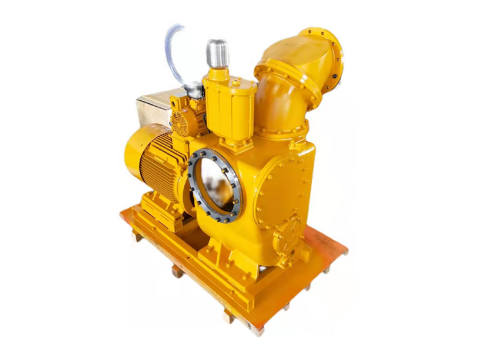Characteristics and working principle of vacuum assisted self-priming pump
Main Features of Vacuum Assisted Self-Priming Pump
The main feature of the vacuum assisted self-priming pump is its ability to quickly and efficiently self-prime, thanks to its vacuum-assisted system, eliminating the need for manual priming. This self-priming ability makes it versatile and suitable for a variety of applications, especially those with varying or difficult-to-reach water levels.
Another key feature is its durable construction, manufactured with high-quality materials to ensure long-lasting performance. The pump's powerful motor generates strong suction, allowing it to handle the most challenging pumping tasks.
In addition, the vacuum assisted self-priming pump is compact and lightweight in design, making it easy to transport and install. User-friendly controls enable simple operation, suitable for both professional and DIY users.
Finally, it has a sealing system that ensures leak-free operation, maintaining the efficiency of the pump. These features combined make the vacuum assisted self-priming pump a reliable and efficient pumping solution for a variety of applications.
Vacuum Assisted Self-Priming Pump Working Principle
The vacuum assisted unit with a vacuum assisted self-priming pump is mainly composed of a controller, vacuum pump, water separator, level sensor, exhaust valve and other components connected by wires and pipes, and the body is installed on the self-priming pump.
The liquid level sensor is installed in the exhaust valve, and the exhaust valve is installed at the air inlet of the self-priming pump. The upper part of the exhaust valve is connected to the vacuum pump with a steam-water separator through the pipeline through the air inlet of the solenoid valve. The liquid level sensor, the self-priming pump motor, and the vacuum pump motor are connected to the control cabinet through the power cord. The vacuum pump and the self-priming pump are automatically controlled through the control cabinet buttons.
A check valve is installed at the outlet of the vacuum pump. Press the start button of the control cabinet, and the vacuum pump starts first (it can also be made into a vacuum pump and a self-priming pump to start together), and the air in the water inlet pipe and pump body of the self-priming pump is extracted. A vacuum negative pressure state is formed between the pump body and the water inlet pipe, so that the medium fills the water inlet pipe and pump body of the self-priming pump.
After the pump body and the water inlet pipe of the self-priming pump are filled with water, it will enter the exhaust valve installed above the outlet of the self-priming pump. When the liquid level in the exhaust valve reaches a certain position, the liquid level sensor in the exhaust valve will transmit the signal to the control cabinet. The control cabinet turns off the vacuum pump and the solenoid valve, and the self-priming pump begins to enter the normal working state. The solenoid valve and steam-water separator can ensure that water will not enter the vacuum pump and damage it.

In any case, if the liquid in the exhaust valve drops, it proves that the suction of the self-priming pump is insufficient. The liquid level sensor will send a signal to the control cabinet, and the control cabinet will restart the vacuum pump to assist the self-priming pump to increase the suction distance. With the continuous improvement of technology, ordinary ZW self-priming sewage pumps and ZX self-priming centrifugal pumps can be equipped with vacuum auxiliary devices to increase the suction distance.




